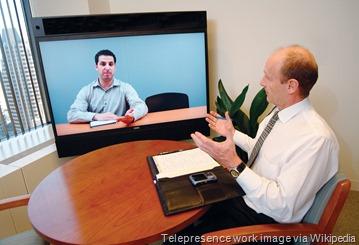
Much has been written about the trends on the customer side, but I find less specific guidance on the changes which are impacting the way we interact with peers at work. An exception is a recent book by Alison Maitland and Peter Thomson, “Future Work: Changing Organizational Culture for the New World of Work,” which offers some real insight on this subject.
They point to several key trends in organizational cultures and working practices that can boost output, cut costs, and give employees more freedom. I have added my own insights, based on my experience advising and working with entrepreneurs and startups:
-
Pay for results, rather than pay for work. Measuring results in itself is not new. What is new is the trend and mentality to just look for results and ignore other traditional management constraints, like the amount of time spent. When and where you do the work does not matter; producing the outcomes to the right quality on time does.
-
Reward shorter hours of high productivity. People who get paid by results have every incentive to think up smarter ways of getting work done. Their reward is more free time for leisure, or more time for bonus objectives and stock options. It does not mean the culture is soft or lacks discipline. Peer pressure keeps productivity standards high.
-
Encourage people to work where and when they are most productive. People concentrate better if they can work at least some of the time in a quieter location, or escape the stress of a long commute. Trusted to get on with the job, people tend to be more motivated to do so, especially if they gain more rewards as a result.
-
Bring your own device to work (BYOD). An increasing number of startups are adopting a BYOD policy, realizing that individuals have their own preferences in the way they access data, collect emails or ‘chat’ to colleagues. Computers are no longer stand-alone dedicated devices, but are built into personal devices, like phones and tablets.
-
Use of collaborative and other social media platforms. In startups, and even corporate environments, I see the spread of collaborative social platforms such as Slack and Yammer. Customers and clients are already on LinkedIn and Facebook, so it makes sense to go where they are, rather than limit your team at work to internal systems.
-
Explore benefits of employing “mature” workers. New research and case studies show that the more mature workers are just as productive as their younger counterparts, are just as successful in training, take less short-term time off, and offer better judgment based on years of experience. They are now actively recruited for many roles.
-
Mobility and connecting to work via the ‘cloud.’ Virtually every collaboration platform and mainline business process today has a cloud-based deployment option. This follows the ‘work from anywhere with any device’ trend, gives everyone the freedom to work more productively, and not be forced into an outdated standardized solution.
-
Trend to a ‘contingent’ workforce. Work is becoming more of a tradable commodity, rather than a job, with freelancers and independent contractors, according to recent data. In the US, nearly 18 million workers identified themselves as independent in 2013, up 10% from 2011. Another study predicts this number could grow to 24 million by 2018.
Certainly, there is still much work to be done in finding the balance between physical gatherings of team members in the same place at the same time, versus remote working and remote collaboration. The announcement by Yahoo a while back, pulling home workers back into the office, triggered a debate on whether some new companies have gone too far.

